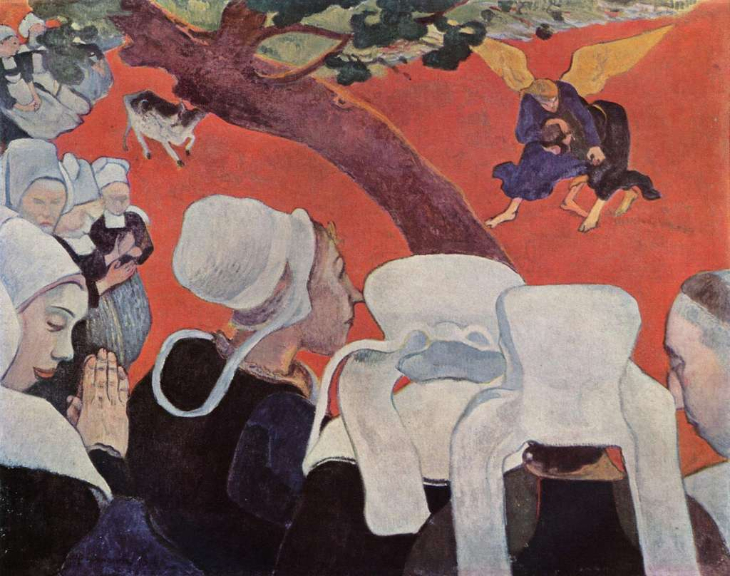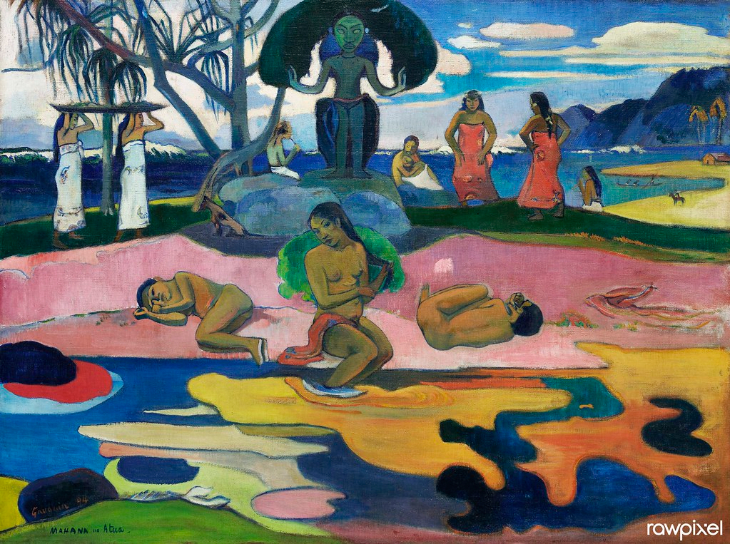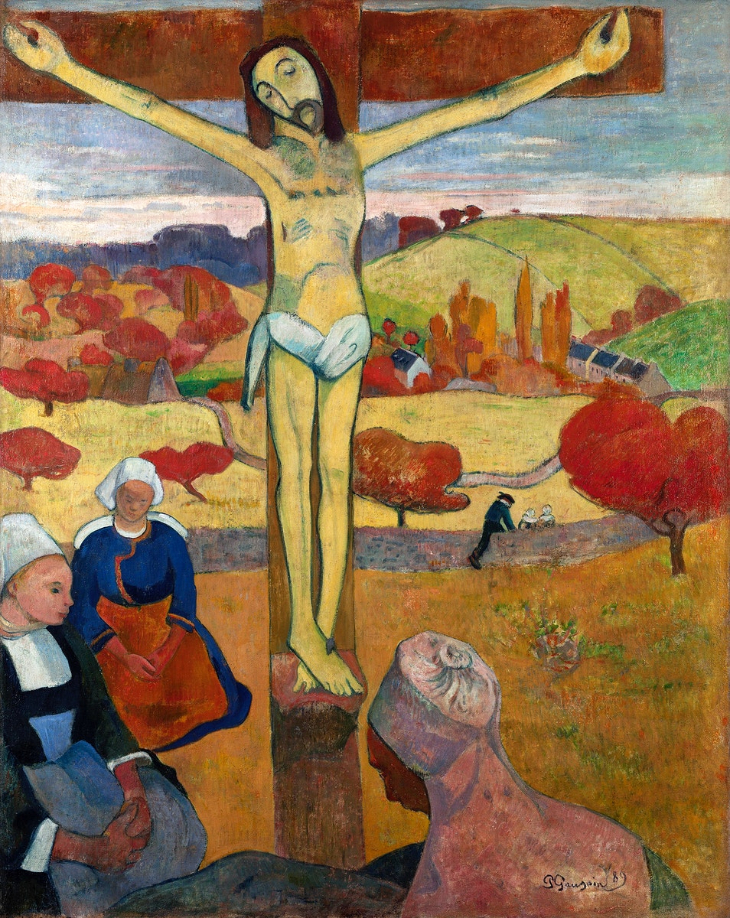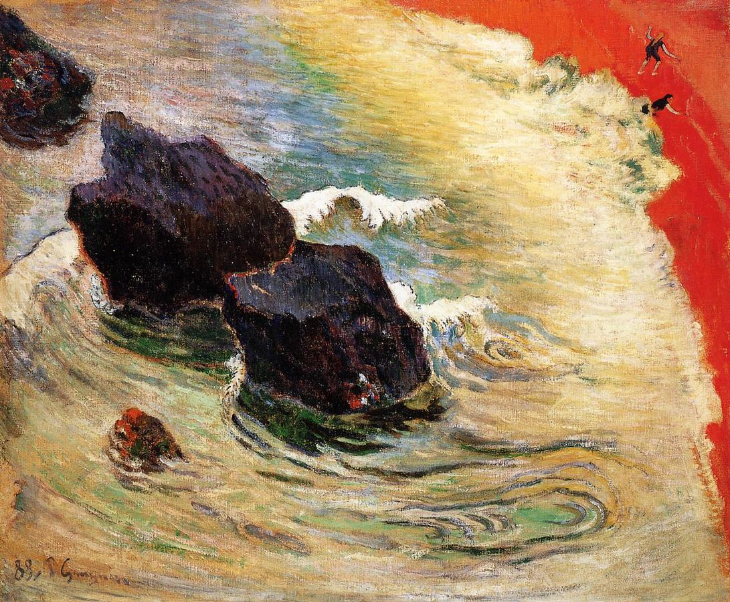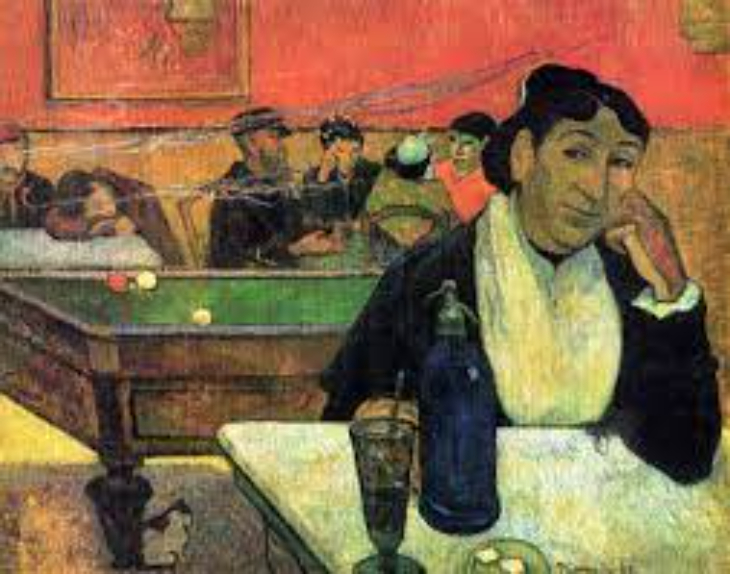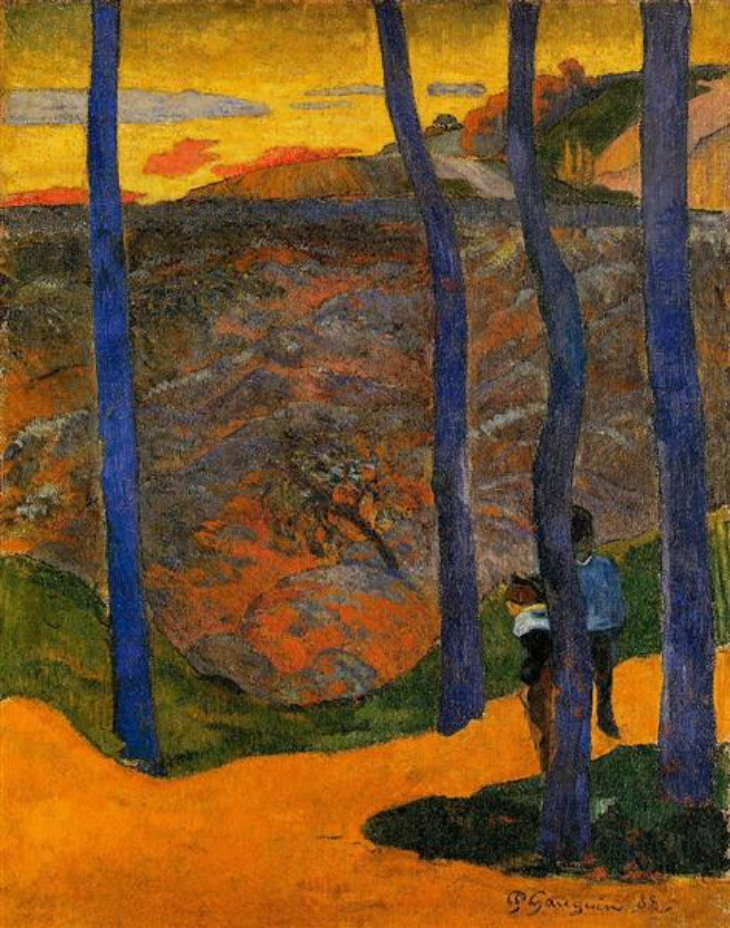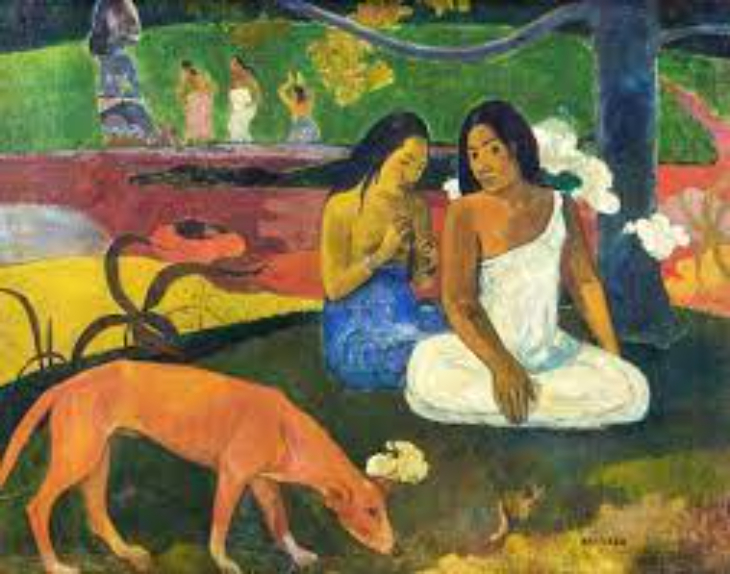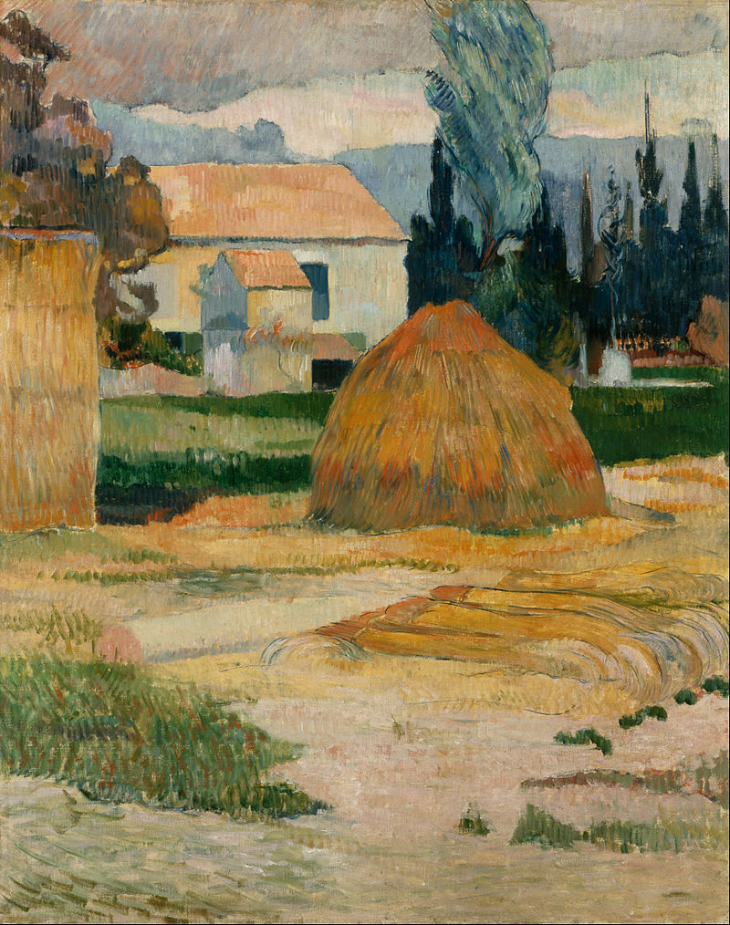1. Vision after the sermon, or Jacob wrestling with the angel, 1888
The first thing that draws the eye to this canvas is a large plain of red. In this painting, Gauguin is interlaying both a realistic scene and an expressionist, symbolic block of color. The block of red does not serve nor mirror reality – it is an expression of a state of mind.
Here, as well as in other paintings we review later on in the article, you can see a strong influence of Japanese prints, be it the flatness of color or the diagonal tree trunk.
2. Where do we come from? Where are we? Where are we going? 1897 to 98
This is a painting of monumental scale in Gauguin‘s body of works. While it was not commissioned as a mural, he did paint it as a mural both in a medium and large size. He used rough burlap fabric instead of canvas to give the illusion of a wall’s rough texture and make the painting appear as a fresco. In the top corners of the painting, you can also see the color yellow used to mimic the wall underneath the “fresco.“
This painting, which was created in Tahiti, is a perfect example of Gauguin’s post-impressionist style. It is a purely symbolic painting, consisting of three groups representing the three phases of life. The group on the right with the baby and sitting women represents the beginning of life. The group in the middle represents daily life as a young adult. You can see that the figure in the center of the painting is the first thing that draws the eye, and it appears so three-dimensional that you can touch it.
The group on the left, naturally, represents the final winter season of life. Throughout the entire painting, Gauguin explores the cycle of life and such themes as sin, purity, and family.
3. Mahana no atua (Day of the God), 1984
This famous painting is another great example of Gaugin combining the fantastic and realistic realms. While we can see a realistic scene depicted in the painting, many colors carry a purely symbolic meaning.
This painting was completed in Paris after Gauguin‘s return from Tahiti. It portrays a carved wooden idol of a local goddess situated on a beach and surrounded by people. On the left, two women are carrying offerings, and on the right, a group is dancing a traditional dance. In the foreground, a group of bathers can be seen on the beach. They seem to carry some kind of symbolic resemblance to the cycle of life, just like in the last painting discussed in this article. This is a typical post-impressionist work, in terms of simplification of forms and symbolic use of color.
4. Yellow Christ, 1889
This is, without a doubt, one of Gauguin’s most famous works. Completed before his travels to Tahiti, it is among the first of his symbolist paintings. Symbolism was all about projecting the inner psyche onto the real world.
The scene shown in the painting depicts the crucifixion of Christ happening in northern France‘s 19th-century panorama. A year or two after this painting was painted, Gauguin also painted a self-portrait with this painting in the background. It is meant to show suffering, despair, and a strong will to escape the industrialized, lonely city life.
5. Merahi metua no Tehamana (Tehamana has many parents, or the ancestors of Tehamana), 1893
During his first visit to Tahiti between 1891 and 1893, Gauguin married a local woman by the name of Tehamana. This was a temporary, not legally binding arranged marriage. At the time, Tahiti was still a French colony. Before he arrived, Gauguin expected to find a raw indigenous land, untouched by the white man.
His idealistic dream was shattered as soon as he touched land, as Tahiti was already a fully colonized country.
The painting may be considered a farewell, as it was painted shortly before his departure back to France.
6. La Vague, 1888
A purely symbolic painting. In this work, the viewers look into the artwork from up above. This point of view was innovative at the time. This specific coast is of a fishing village by the name Le Perdou, where the waves are strong and the winds are harsh.
You can see the raw energy of nature in the color palette Gauguin chose for this piece. Be it the red of the coast or the entire rainbow of color spilling from the beach into the sea and surrounding the rocks, the color in this painting is almost purely symbolic and fantastic.
7. Night Café, Arles, 1888
Many people know of Van Gogh's famous Night Café (from the same year), but in our opinion, Gauguin's version is just as important in the broad look of art history. This is a perfect example of a post-impressionist painting filled with symbolism.
At first glance, there are no explicit suggestive depictions, or any hint of lust, but looking at the painting through a symbolic lens, you easily notice the clashing contrast between green and red, the look in the madam's eyes, the cat under the table, and even the posture of the people in the background, all insinuating a promiscuous environment.
8. Blue trees. Your turn will come, my beauty!, 1888
At first glance, this may seem like a joyous piece of nature with lively, happy, and vivid colors. Looking at the color palette, you can understand quite easily how Gauguin inspired the Fauvists. But the more you look, the more ominous this painting becomes.
The field's perspective seems to rise towards the viewer, threatening to crash over. The unorthodox color palette creates an uneasy environment. The strange interaction between the two figures amplifies the effect. The dark, intense color palette as well as the four tree trunks divide the painting into a grid.
9. Arearea, 1892
An enchanting, exotic scene in the eyes of Gauguin. In this painting, where dream and reality mix, we can see two women and a dog in the foreground, and another group of worshiping women in the background. They worship a Maori statue.
While this painting was not critically acclaimed, to say the least, Gauguin considered it one of his finest works. This is one of the works he completed on his first visit to Tahiti. It is full of harmony and melancholy, luxury and nature all at the same time.
10. Landscape near Arles, 1888
This painting is a little different from the rest of the paintings listed in this article. You cannot attribute to it the characteristics of the symbolic stream or the post-impressionist style, although it does have some hints of both. In this work, we start to see the beginning of Gauguin's post-impressionism.
We see the simplification of the natural world into geometric shapes, which is the stylistic mark of post-impressionism. At the same time, we can also observe quick, short brushstrokes - a distinctive element of impressionism. What this work lacks from impressionism are a realistic depiction of nature‘s colors and a natural portrayal of lighting.

